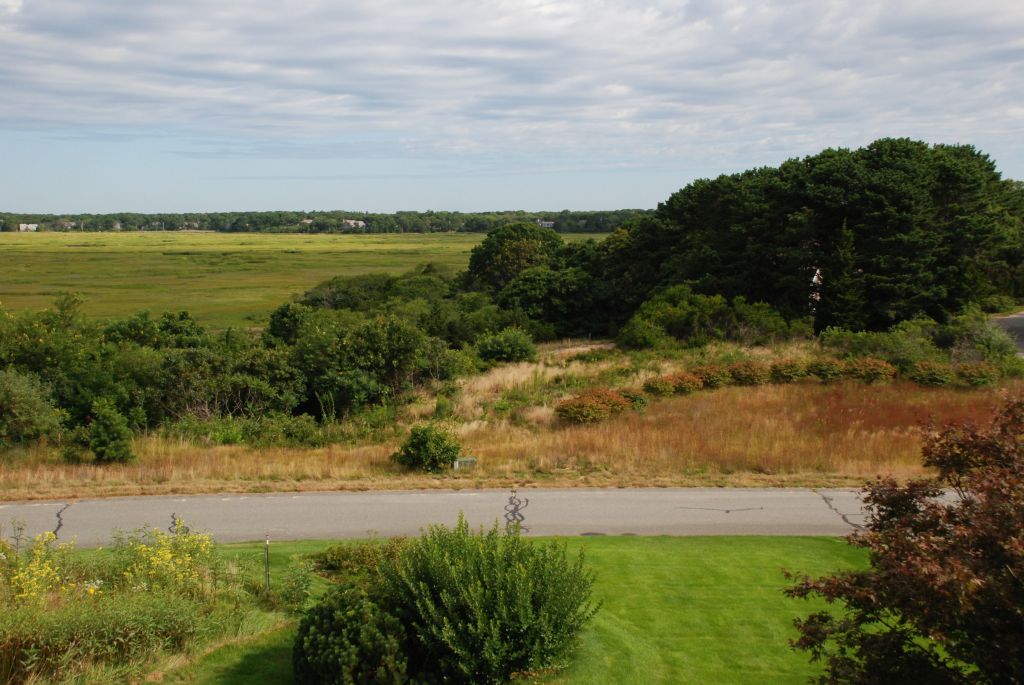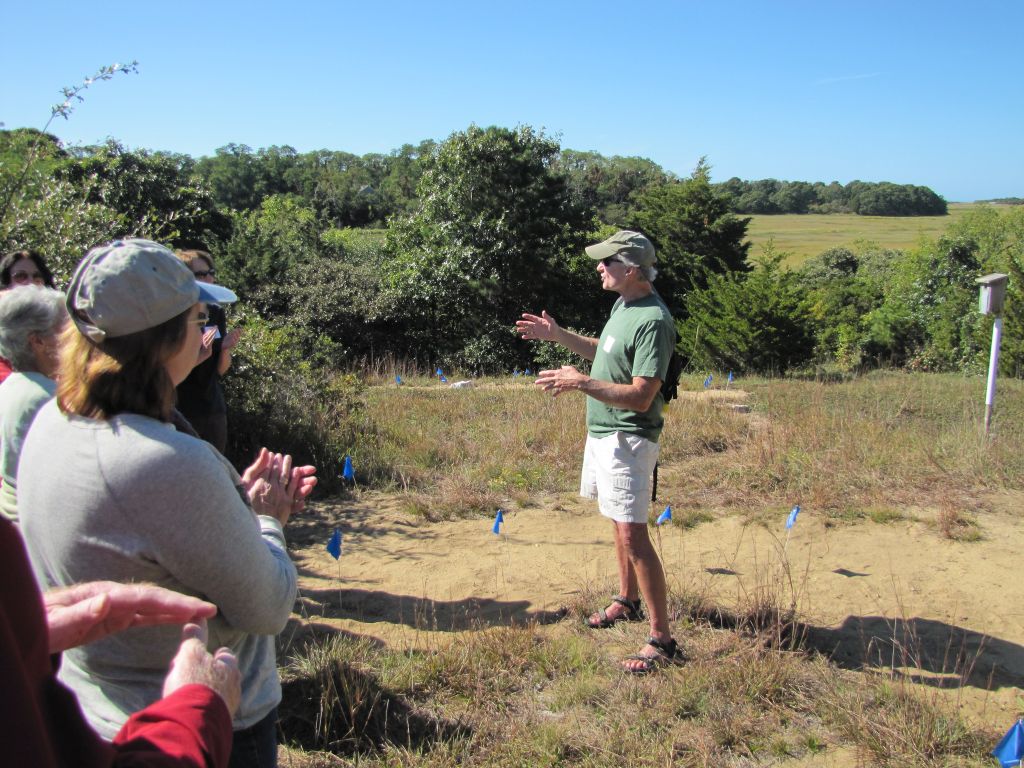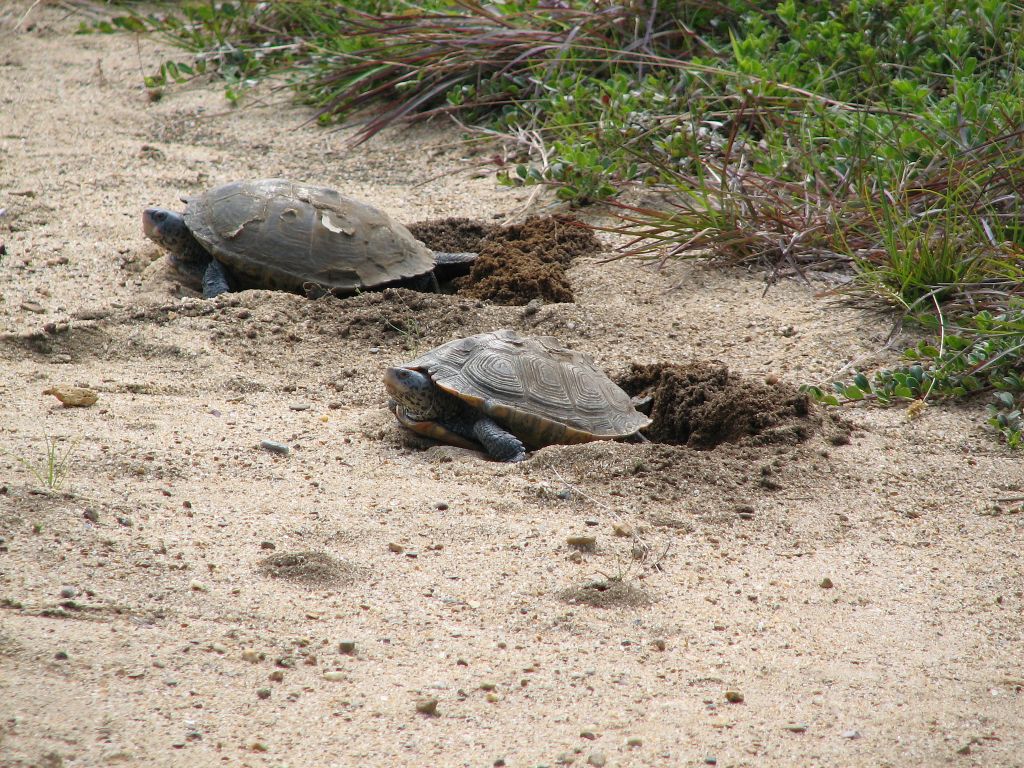
Terrapin Cove in Eastham
Last September, a new partnership began between the Town of Eastham, Mass Audubon, and the Eastham Conservation Foundation with the common mission of preserving what’s come to be known as Terrapin Cove, an important diamondback terrapin nesting habitat near the Bee’s River marsh. Wellfleet Bay volunteer Bill Allan, who’s been protecting diamondback terrapins for twelve years, played a crucial role in the project. We asked him to tell us about his first nesting season since the property was permanently saved for turtles.

Bill Allan stands next to a turtle garden at September 2015 event celebrating the protection of Terrapin Cove.
In the past, as I started a new nesting season at Terrapin Cove, there was always a renewed concern that this could be the last year should this prime real estate be sold for development before the next season. But no longer! Thanks to a new Management Agreement with the Town that is now in place, Mass Audubon will maintain the current three turtle gardens and even expand the gardens, if necessary.
The first nest this year was laid on June 15th in the Upper Turtle Garden. To nest there, terrapins need to travel about a quarter mile across the salt marsh, find the right entrance through the trees, and crawl uphill to the turtle gardens, which they cannot see from the marsh. By design, the turtles’ extensive journey culminating in an exhaustive nesting process is not interfered with by humans, aka me ! They come and leave without disturbance, which has been a key reason for the success of Terrapin Cove.

Terrapins get down to the business of nesting (photo by Bill Allan).
This year we started a program to relocate any terrapins found crossing a busy Eastham road on their nesting journey to the safety of Terrapin Cove. Being hit by cars is one of the leading causes of mortality for breeding females. This year I relocated four terrapins to TC, of which three nested. Hopefully, they will choose to nest at TC in the future. In total there were 39 nests at TC this season, which is the highest number of nests since I started protecting nests there in 2004. Terrapins love it!
To date 12 of the 39 nests have hatched, yielding 144 hatchlings–a 91% productivity rate which is extremely high compared to other nesting sites. The high productivity is due mostly to very low infestations by fly maggots and red ants and soil conditions that retain moisture.

Bill and his main turtle garden at Terrapin Cove (photo by Ann Allan)
It’s my hope that the quality of the habitat at Terrapin Cove will continue to help us restore the northern diamondback terrapin population in Eastham’s salt marshes.

